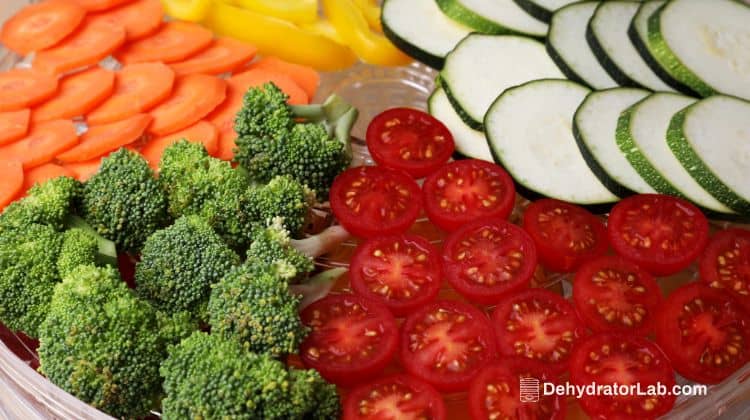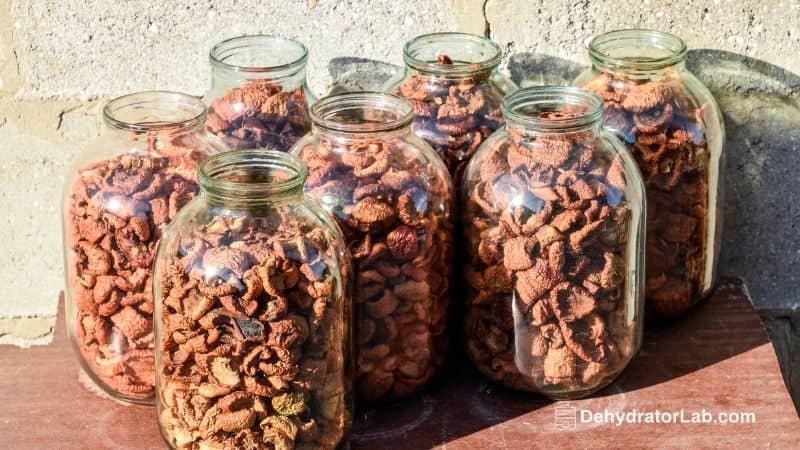Hello, fellow food enthusiasts! Today, I want to share with you my process of dehydrating some of my favorite frozen veggies. This method is perfect for food storage and emergency prepping.
I often use dehydrated broccoli in various dishes, such as my broccoli cheese casserole, and find it to be a versatile ingredient that can easily be rehydrated.

As an Amazon Associate, I earn from qualifying purchases. If you make a purchase after clicking on a link I may earn a small commission at no extra cost to you if items are purchased.
Dehydrating frozen vegetables not only saves space in the freezer but also offers a convenient and long-lasting food storage option.
Sure, you can have fresh or frozen broccoli, but with dehydrated veggies, you can create a variety of meals, such as broccoli soup, casseroles, or just simple cooked broccoli.
In this article:
Best Time to Buy Frozen Vegetables
The best time to stock up on frozen veggies is around Thanksgiving when stores like Kroger offer them at great prices. I usually buy several bags of my favorite vegetables, such as broccoli, spinach, and mirepoix mix (carrot, celery, and onion), and dehydrate them.
Dehydrating frozen vegetables saves a lot of work compared to using fresh ones, as there’s no need to cut, steam, or blanch the veggies before dehydrating. The packages come ready for you, which is simply amazing.
What Frozen Veggies to Dehydrate
One of my go-to blends I use in many recipes is a mixture of carrot, celery, and onion. While you might wonder why I don’t just use fresh produce, dehydrating already cut and mixed vegetables saves time and effort.
Plus, it frees up valuable freezer space, which I need for my other food storage, because dehydrated vegetables significantly reduce their volume, allowing you to store a large amount of food in a small space, making storage a breeze.

Just to give you an idea, a 12-ounce bag of mixed veggies, once dehydrated, reduces to a small, compact jar.
This space-saving method is perfect for those of us without unlimited storage. Vacuum sealing the jars ensures that the veggies stay fresh and are ready to use whenever you need them.
Dehydrating Process Using a Food Dehydrator
Now, let’s get started on the dehydrating process. I use an Excalibur dehydrator, which I find to be efficient and reliable so I highly recommend it. It’s perfect for dehydrating because it has various settings for different types of food, including vegetables, fruits, herbs, and meats.
To begin, remove the front panel of the dehydrator and start filling the trays with the frozen veggies. Make sure to spread them out evenly, as this will help them dry faster. You can also break up any frozen clumps after an hour or so once they’ve softened, as the vegetables thaw slightly.
After filling the trays, set the temperature to 125 degrees Fahrenheit for vegetables and the timer for 12 hours. Plug in the dehydrator, and you’re good to go. The Excalibur machine does make some noise while running, but I find it to be tolerable.
Once done, you’ll be left with dehydrated veggies that are ready for storage or meal preparation. You can even customize your dehydrated veggies by adding seasonings like garlic, salt, pepper, or herbs such as parsley and sage. This makes them even more recipe-ready when you need them.
Afterwards, you can store them in vacuum-sealed jars, adding any additional seasonings or herbs if desired. This method is perfect for creating meal-ready jars, which can be a lifesaver during emergencies or times when you need to whip up a quick meal.
Dehydrating is an easy and rewarding way to store food, providing a sense of assurance that you’ll have healthy and delicious meals available even in challenging situations.
Whether it’s due to a power outage, job loss, or helping a friend in need, having dehydrated veggies on hand can be a valuable asset in your pantry.
Step-by-step Guide (8 Easy Steps)
Here is a quick how-to dehydrate frozen veggies step-by-step guide ready for you to print:
Step 1: Gather Your Supplies and Equipment
- Frozen vegetables of your choice (broccoli, spinach, mirepoix blend, etc.)
- Excalibur dehydrator (or a similar model)
- Dehydrator trays
- Vacuum-sealed jars for storage
- Optional seasonings (garlic, salt, pepper, herbs)
Step 2: Prepare the Vegetables
- Remove the frozen vegetables from their packaging.
- Allow them to thaw for a short period if necessary to break up any clumps.
Step 3: Load the Dehydrator Trays
- Remove the front panel of your dehydrator.
- Evenly spread the vegetables across the trays, ensuring they are not too crowded.
- If you notice any clumps of vegetables, break them up after an hour or so, once they’ve softened.
Step 4: Set the Dehydrator Temperature and Time
- Set the temperature to 125 degrees Fahrenheit (or the recommended temperature for vegetables on your dehydrator).
- Set the dehydration time for 12 hours.
Step 5: Start the Dehydration Process
- Place the loaded trays into the dehydrator.
- Turn on the dehydrator and let it run for the full 12 hours.
Step 6: Check the Vegetables
- After 12 hours, check the vegetables to ensure they are fully dehydrated. They should be dry and crisp to the touch.
- If necessary, continue dehydrating until the desired texture is reached.
Step 7: Customize and Store the Dehydrated Vegetables
- Optionally, add seasonings such as garlic, salt, pepper, or herbs to the dehydrated vegetables to enhance their flavor.
- Transfer the dehydrated vegetables to airtight jars for storage.
Step 8: Enjoy Your Dehydrated Vegetables
- Use your dehydrated vegetables in various recipes, such as soups, casseroles, or as standalone dishes.
- Rehydrate the vegetables as needed by adding water or incorporating them into a recipe with moisture.
FAQ’s
Now let’s ask some of the most important questions when it comes to dehydrating frozen vegetables:
Can I dehydrate frozen vegetables?
Yes, you can dehydrate frozen vegetables, and it’s a convenient option because they are already cleaned, cut, and blanched, saving you time and effort.
How long do dehydrated frozen vegetables last?
Dehydrated frozen vegetables can last up to 1-2 years if stored properly in a cool, dry place and in vacuum-sealed containers or jars.
Can you dehydrate frozen peas and carrots?
Yes, you can dehydrate frozen peas and carrots, as well as other vegetables like broccoli, spinach, and mixed vegetables.
How long does it take to dehydrate frozen vegetables?
Dehydrating frozen vegetables typically takes around 12 hours, but the time may vary depending on the type of vegetable and the dehydrator’s settings.
Is it better to dehydrate or freeze vegetables?
Both methods have their advantages, but dehydrating vegetables offers the benefit of longer shelf life, reduced storage space, and the ability to use them in a wider variety of recipes.
Should you thaw frozen vegetables before dehydrating?
Thawing frozen vegetables briefly before dehydrating can help break up any clumps and ensure even dehydration, but it is not a requirement.
Do you need to cook vegetables before dehydrating?
Most frozen vegetables are already blanched, so you do not need to cook them before dehydrating. If you are using fresh vegetables, blanching or steaming is recommended before dehydration.
Can frozen broccoli be dehydrated?
Yes, frozen broccoli can be dehydrated, providing a convenient and versatile food storage option for various recipes.
What is the ideal temperature for dehydrating frozen vegetables?
The ideal temperature for dehydrating frozen vegetables is around 125 degrees Fahrenheit, but consult your dehydrator’s manual for specific recommendations.
How do you rehydrate dehydrated frozen vegetables?
To rehydrate dehydrated frozen vegetables, simply add water or incorporate them into a recipe with moisture, like soups or casseroles, and cook as usual.
Conclusion
So there you have it! I hope you find this process inspiring and consider giving it a try. Dehydrating frozen veggies is a game-changer for food storage and emergency prepping.
By following our step-by-step process, you’ll soon become a master at preserving and utilizing these versatile ingredients for creating delicious, nutritious meals while maximizing space in your pantry.
If you have any experience with dehydrating or are looking forward to trying it out, feel free to share your thoughts in the comments below. Happy dehydrating!



